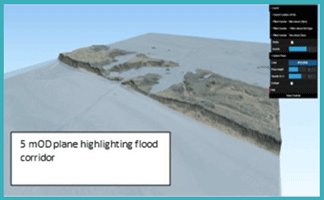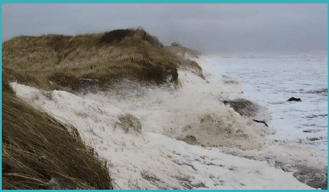Supporting impact - Scottish Crown Estate net revenue: local authority use and insights
Net Revenues from the Scottish Crown Estate have been distributed to coastal Local Authorities for the benefit of coastal communities since 2019. This study was commissioned as part of the review process for the first two rounds of distribution of Scottish Crown Estate net revenues.
Setting the conditions for scale
Achieving scale isn't simply about bigger and therefore fewer projects. Scale of impact can be achieved in numerous ways, and which of these works locally will be determined by the needs of the community. Below, we describe several principles and concepts that may help to unlock a larger scale of impact for your communities. These are suggestions that you may wish to explore further to identify those suitable for your region and approach.
Innovation
Are you encouraging innovation, and what can you do to make failure acceptable, as long as lessons are learned?
Innovation takes numerous forms, and is a necessary ingredient in progression towards a just, net zero and green society. Transfer innovation – taking an idea from one context and applying it to another – has already been addressed, noting the need for the sharing and movement of ideas and experiences.
Innovation by its nature is taking on fresh approach to a problem, and therefore is associated with greater risk. We noted earlier that the rules of a fund or approach may be inherently risk averse, and so limit innovation. Revisiting the rules may create more space for innovation; this could include investing at higher levels or at an earlier stage, as well as considering different types of organisation.
Another key part of innovation is learning from failure. The adoption of approaches that support the use of minimum viable products, rapid prototyping and testing of concepts – an entrepreneurial approach - can help to accelerate this process, using failure to rapidly improve a concept toward the desired solution.
Leveraging
How can you use net revenues to secure additional resources?
Leveraging is already seen across the public and third sector; it is simply using one source of funding to get commitment from another source. One of the most regularly used versions of this is "match-funding," with security of the first investor getting the commitment of the same level of funds from another. There are numerous benefits to this approach, including the overall de-risking of the investment and allowing funding to go further.
A regular barrier to this approach is that there are more second source funders (i.e. those who offer to match funds that have already been secured) than there are those who are prepared to commit first and be the fund that is levered. This can leave projects in limbo, close to success but not able to progress.
Net revenues are a flexible source of funding and could be used to lever additional support, and depending on the levels of levered money, could potentially double the monetary impact of the revenues. Dependent on the risk appetite of the Local Authority, these monies could be the first investor and could be used prior to finding the additional source of funds to allow progress to start. This is linked to innovation and accepting the possibility of failure and lessons learned- accelerating new ideas that are potentially high impact, but therefore also higher risk.
Bridging
Can you use the flexibility of net revenues to bridge gaps in funding or from one phase to another?
Bridging can take several forms: common to all is the idea of using a source of funding to get from one point to another.
One such approach has been used by the Esmee Fairnbairn Foundation, to support the Rivers Trust through the use of a bridging loan to secure an opportunity that had high upfront capital costs and a payment model that was in arrears. The provision of this support allowed progress ahead of a new funding stream, unlocking considerable benefit to communities and the environment.
Another form of bridging is to fund an intermediary project or study that unlocks an often larger follow-on investment. The need for this sort of support can often be found in infrastructure projects or new business models where a concept gains traction, but lacks the depth of information to support a full funding application or to secure investors. The intermediary step to develop proof of concept or a feasibility study is needed to bridge this gap, but is regularly difficult to secure funding for as it can be viewed as being too risky (i.e. what if the study indicates it isn't feasible?). Net revenues could be the income stream that makes the bridge and unlocks the potential of these projects.
Case Study: Coastal change adaptation in Montrose Bay
The challenge
We are now locked into sea level rise beyond 2100 regardless of future emission scenarios. Quickening sea level rise, alongside other factors like the increasing prevalence of major weather events and storm surges, mean erosion and storm damage will increase and affect most erodible areas of Scotland's coast over the coming decades.
The coastal sand dune ridges in Montrose Bay provide a natural erosion and flood protection role to the interior land behind the dunes. However, the Dynamic Coast 2 project shows that the dunes are now eroding by 2.5 m/yr; much faster than they have in the past, reducing protection at the very time the threat is increasing.
Whilst much of the southern part of the Montrose dunes are high, several lower corridors through it provide routes inland for marine flood water. As sea levels continue to rise and major weather events increase in frequency, the likelihood of flooding increases in the future; today's 200-year event becomes a 75-year event by 2050 and a 10-year event by 2080. Unchecked, present coastal erosion is expected to create additional flood corridors within 6 years.


The solution
Angus Council has been working closely with the Dynamic Coast Team to identify long term resilience options for Montrose beach. Recognising the need to take urgent action to protect Montrose from erosion and sea level rise, Angus Council has adopted a three-stage approach to manage these increasing threats whilst safeguarding coastal land use, and had already undertaken preliminary coastal protection works and studies to fill in gaps in the dune system.
The preliminary works also provide a physical and procedural baseline that is being used by the Council to develop a formal coastal flood protection scheme for Montrose. If the preferred option is included in the Local Flood Risk Management Plan, the Council will be able to apply to Scottish Government for capital funding. The new Scottish Government Coastal Change Adaptation Fund may be an alternative option.
This flexible, or Dynamic Adaptive Pathways approach, is recognised internationally as the best way to acknowledge uncertainty and is one of the ways coastal communities, like Montrose, can become 'sea level wise', and more resilient in the face of climate change.
The role of net revenues
Angus Council used its first two allocations of net revenues together with its own capital funds, to undertake preliminary coastal protection works to fill in gaps in the dune system. This has provided immediate benefit to the community and also put in place the planning and evidence necessary to secure much larger capital support for the next phases of the approach.
Contact
Email: CESU@gov.scot
There is a problem
Thanks for your feedback